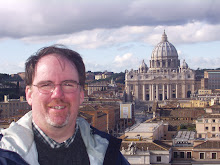 We are approaching the end of our liturgical year, the Solemnity of Christ the King. Its position on the liturgical calendar helps remind us that all that we do as Christians leads us into the Kingdom of Christ, one with God the Father.
We are approaching the end of our liturgical year, the Solemnity of Christ the King. Its position on the liturgical calendar helps remind us that all that we do as Christians leads us into the Kingdom of Christ, one with God the Father.The feast was established only 84 years ago by Pope Pius XI, partially in response to the ongoing celebration of the sixteenth centenary of the Council of Nicea (325) which defined the dogma of the Son and the Father "of one being," (consubstantial) and added the words "whose kingdom shall have no end" to the Profession of Faith (still known as the Nicene Creed).
In the years following the First World War, Pope Pius XI was concerned that the great devastation brought by modern warfare had taught nothing to nations and peoples. In his encyclical Quas Primas (December 11, 1925) he began:
Men must look for the peace of Christ in the Kingdom of Christ; and that We promised to do as far as lay in Our power. In the Kingdom of Christ, that is, it seemed to Us that peace could not be more effectually restored nor fixed upon a firmer basis than through the restoration of the Empire of Our Lord. (Quas primas, 1)
Rather than commissioning studies or convening a conference, Pope Pius XI determined that the best way to help people understand the concept of Christ's sovereignty was by commemorating it in the liturgy.
For people are instructed in the truths of faith, and brought to appreciate the inner joys of religion far more effectually by the annual celebration of our sacred mysteries than by any official pronouncement of the teaching of the Church. Such pronouncements usually reach only a few and the more learned among the faithful; feasts reach them all; the former speak but once, the latter speak every year - in fact, forever. The church's teaching affects the mind primarily; her feasts affect both mind and heart... (Quas primas, 21)
He declared the final Sunday of October to be the date of this feast's observance. He believed that it would provide a fitting introduction to the Feast of All Saints, who considered Christ their glory. He also felt that this date, late in the Church year, vividly expressed "the crowning glory upon the mysteries of the life of Christ already commemorated during the year." (Quas primas, 29)
With the reform of the liturgical calendar after the Second Vatican Council, the solemnity was moved to the last Sunday of the Church year.
Primary source: The Liturgical Year: Its History and Its Meaning After the Reform of the Liturgy (Adolf Adam, tr. Matthew J. O'Connell), Liturgical Press.

No comments:
Post a Comment